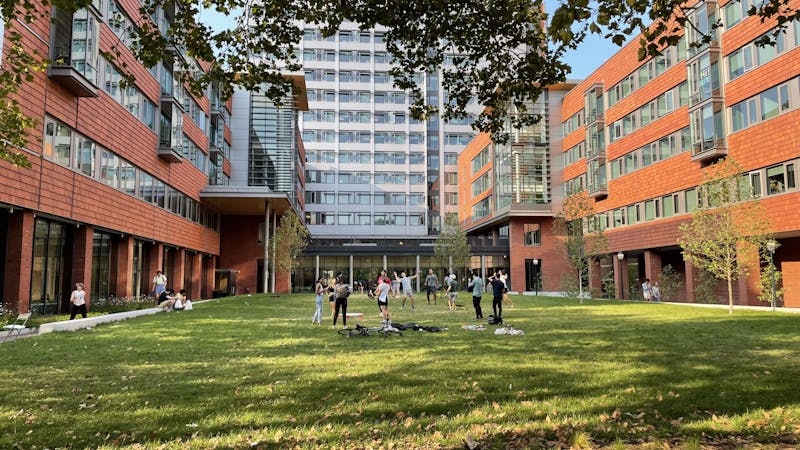
The Daily Pennsylvanian found that the percentage increase in non-medical school administrators at Penn surpassed the corresponding increase in full-time faculty over the past twenty years.
Credit: Sydney CurranPenn is following a national trend of hiring a higher ratio of administrators to instructional faculty, according to a Daily Pennsylvanian analysis.
The DP’s analysis found that the number of full-time, non-medical school administrators at Penn over the past 20 years increased by 78% — compared to a 40% increase in full-time, non-medical faculty. The analysis relied on data from the United States Department of Education and Penn’s annual reports, concluding that student enrollment has remained relatively constant — increasing by just 5% — while hiring increased at greater rates.
A request for comment was left with a University spokesperson.
These numbers are consistent with a national trend often described as “administrative bloat,” in which universities are generally hiring more administrators than instructional faculty. This trend has been observed at other universities, including Harvard University.
Penn administration growing faster than instructional staff size
Penn Graduate School of Education professor Jonathan Zimmerman called administrative bloat “the most important trend that's happened during [his] career as a scholar.”
Zimmerman said there are “necessary” and “even legal reasons” to have institutions become “highly managed places.” However, he also believes administrative bloat “changes the tone of the University in a very real way.”
“The students are being socialized to expect a kind of management from the University,” Zimmerman said. “That's a fundamentally disempowering maneuver.”
Richard Vedder, professor emeritus at Ohio University, said that the role of university administrators has historically been to record grades, carry out clerical work, and enforce rules.
As colleges expanded and government regulations increased in the 1950s and 1960s, the number of administrators grew as well, according to Zimmerman.
Jay Greene, a research fellow at The Heritage Foundation and the former chair of the Department of Education Reform at the University of Arkansas, said that many universities used to feel as if they were run by a “collective of faculty.” Administrative positions increased as responsibilities — including managing student life, residential life, and conduct — were shifted away from faculty, according to Greene.
At Penn, the Office of Student Affairs has 160 full-time staff and 10 part-time staff, and it was ranked as one of the most promising places to work in student affairs by Diverse Magazine in 2023. The average salary of an entry-level job at the Office of Student Affairs is $50,000, averaging $70,000 for mid-level job and $225,000 for a senior job, according to past DP coverage.
“When I started college in the late 1950s, my guess for every two professors there was one administrator … Now at some Ivy League schools we have up to 10 administrators for every faculty,” Vedder said.
Administrative bloat has substantial financial costs to the University. Vedder estimated that if Penn had 300 fewer administrators, they would save up to $50 million a year.
In May, Penn Medicine cut administrators in a cost-cutting move, saving $40 million annually. The DP reported that there were several duplicate administrative positions included in the cuts.
“None of these people cost that much but collectively, it adds up. And it's not just their salaries and benefits that have to be covered, but they need offices and buildings for their offices,” Greene said.
Penn's tuition increases exceed median income growth over time
The growing size of Penn's administration comes as institutional spending at private American colleges increased by 6.7% between 2015 and 2020, while instructional spending increased by 2.5%. The cost of college has also far exceeded income growth, with prices increasing eight times as fast.
Vedder said that there have been additional consequences of increased spending on administrators.
At Ohio University, Vedder said the school was spending so much on administration that there was less money for faculty sabbaticals.
“We didn’t have money to hire additional faculty, and in some cases, our teaching burden grew relative to what it would have been had we had a smaller administration,” Vedder said.
Greene also worried that ‘over-administration’ has made the college experience more isolating for students, adding that “it has disconnected students from faculty.”
The answer, according to Zimmerman, is likely more nuanced than simply cuts.
“We need administrators … but I think we do need a conversation about how much administration we need,” Zimmerman said.
The Daily Pennsylvanian is an independent, student-run newspaper. Please consider making a donation to support the coverage that shapes the University. Your generosity ensures a future of strong journalism at Penn.
Donate






